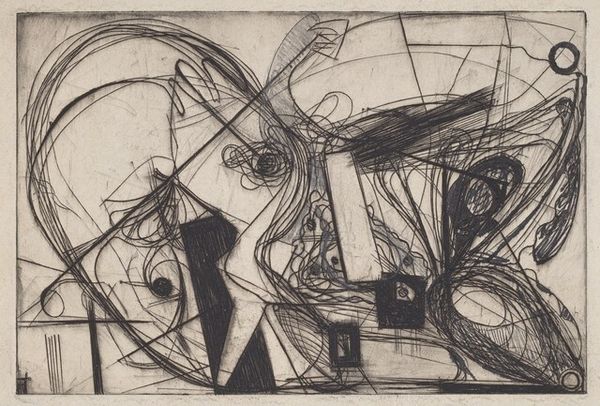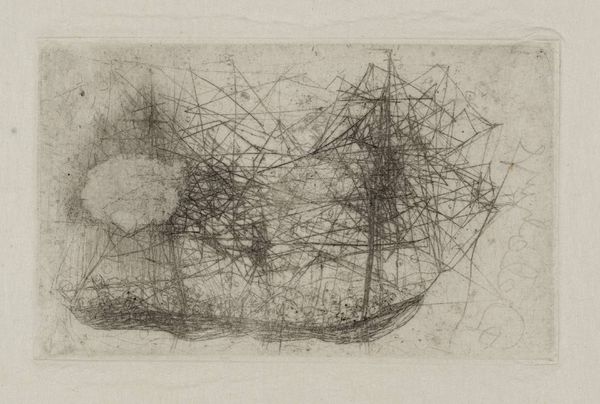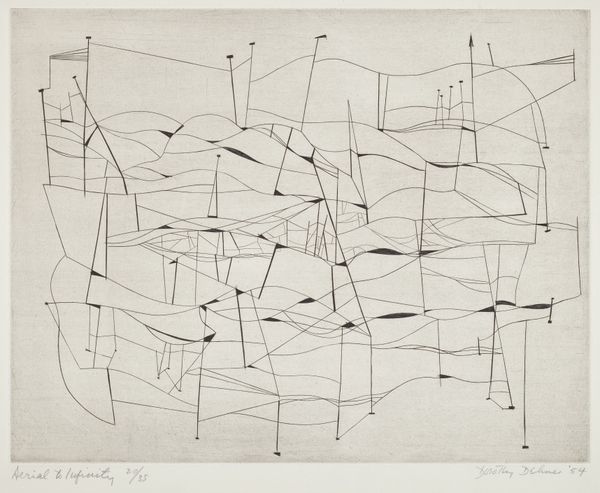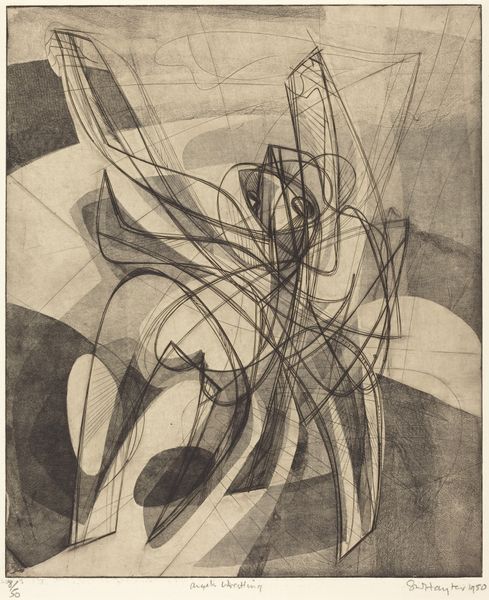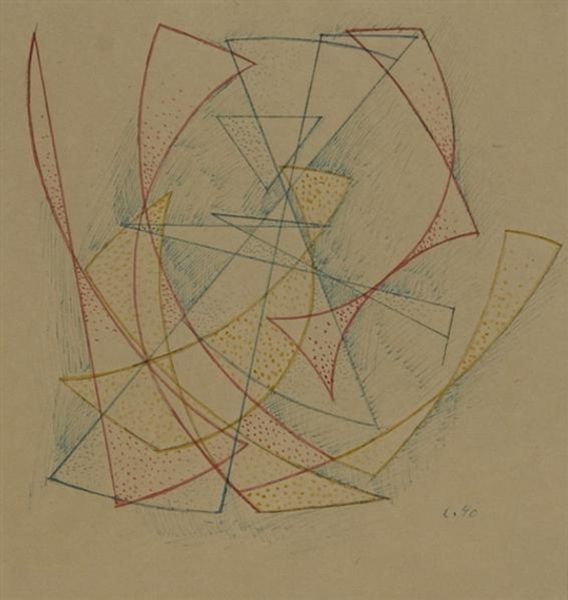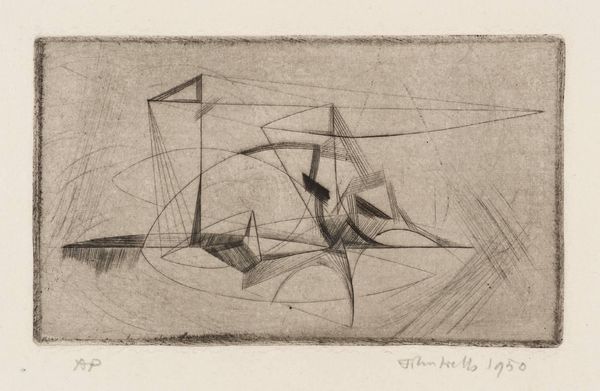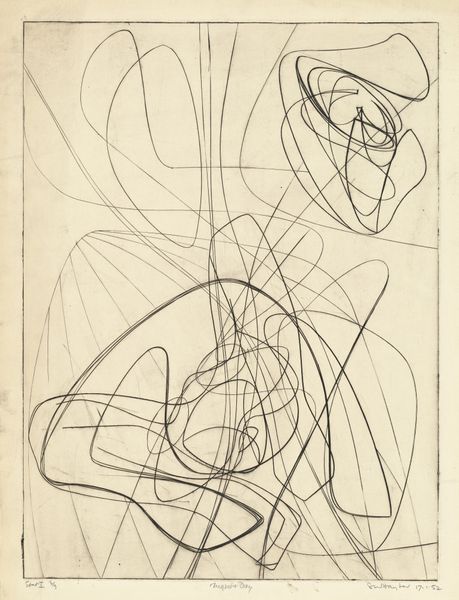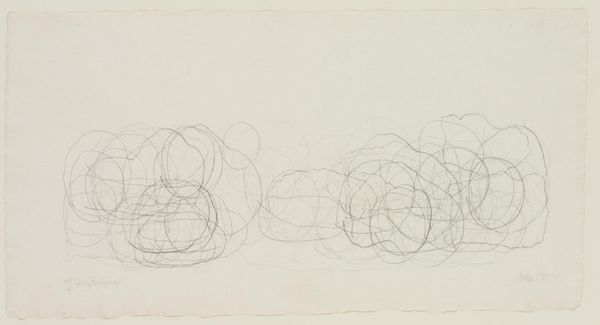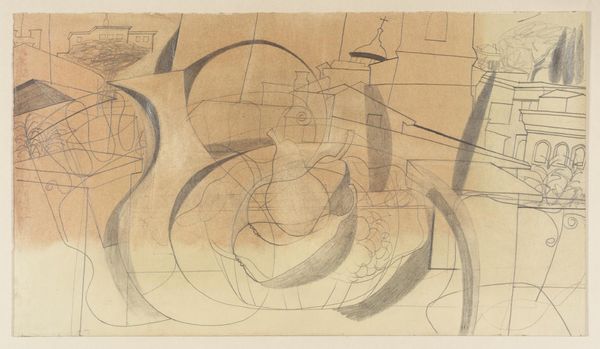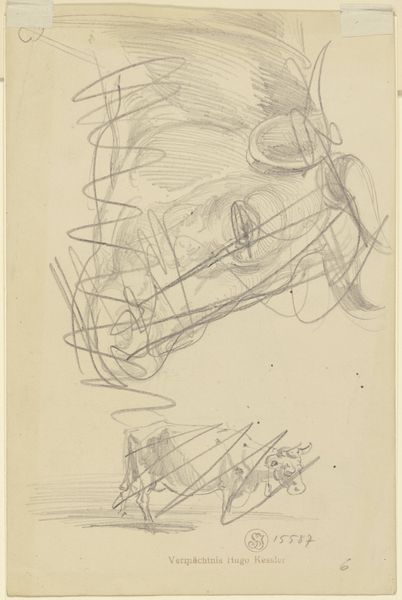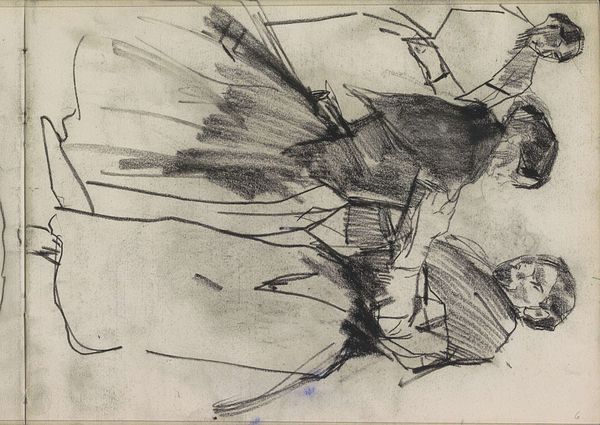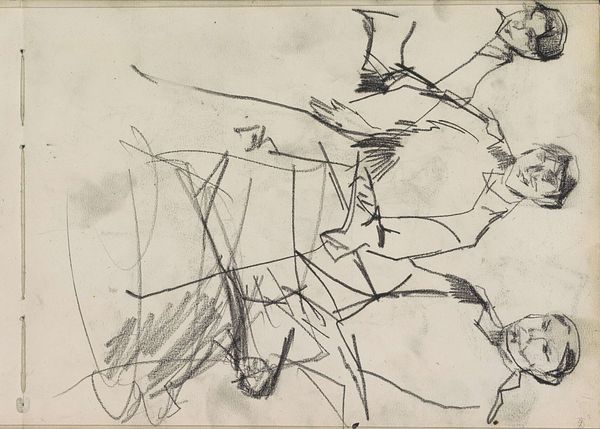
drawing, print, graphite
#
drawing
#
cubism
# print
#
pencil sketch
#
form
#
geometric
#
abstraction
#
line
#
graphite
Dimensions: plate: 179 x 239 mm sheet: 265 x 330 mm
Copyright: National Gallery of Art: CC0 1.0
Editor: This is "Essai II" by John Ferren, made in 1934, a graphite drawing. It's quite an abstract piece; the overlapping lines and geometric forms create a sense of organized chaos. What do you see in this work? Curator: This piece feels like a glimpse into the architecture of thought. Look at how Ferren uses line – not just to define shapes, but to suggest movement, energy. It reminds me of early 20th-century explorations into the fourth dimension. Do you sense any relationship to scientific diagrams? Editor: I can see that – there's almost a technical drawing quality to it. What does that suggest about its symbolism? Curator: Perhaps it's a symbolic investigation into how we construct meaning. The geometric forms, almost like shattered Platonic solids, could represent broken or redefined ideals. The graphite, a medium of both precision and sketching, underscores the duality of concrete forms and fluid thought. Consider, what emotions does the artist invoke? Editor: Intrigue and also uncertainty. The lack of clear grounding leaves me in a space of perpetual questioning. Is it the incompleteness, or something else? Curator: Exactly. These forms, suspended in their ambiguous space, hint at the fragmented nature of modern identity, the struggle to find fixed points of reference in a rapidly changing world. Editor: So, it's less about what we see, and more about the cultural anxieties the image reflects? Curator: Precisely. Ferren gives shape to these intangible anxieties, inviting viewers to confront them. What stays with you? Editor: It makes me think about how our internal structures of thought and belief are visualized and reshaped through art. Thanks for opening my eyes to it. Curator: The pleasure was mine. I’ll certainly consider line and abstraction differently.
Comments
No comments
Be the first to comment and join the conversation on the ultimate creative platform.


